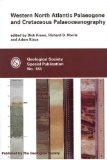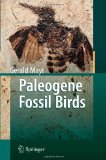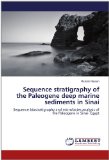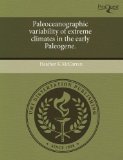
|
Western North Atlantic Palaeogene and Cretaceous Palaeoceanography
Palaeogene and Cretaceous palaeoceaongraphy has been the focus of intense international interest in the last few years, spurred by deep ocean drilling at Blake Nose in the North Atlantic as well as the need to use past climate change as input for modelling future climate change. This book brings together a number of review papers that describe ancient oceans and unique events in the Earth's climatic history and evolution of biota. The papers show evidence of periods characterised by exceptional global warmth such as Late Palaeocene Thermal Maximum and Cretaceous anoxic events. Geochemical records and modelling will make the reader aware that these periods were forced by greenhouse gases. This information is essential for understanding the response of the ocean-climate system to the current input of fossil fuels. In this sense, the book contributes to the understanding of fundamental aspects of Earth's climate, the carbon cycle, and marine ecosystems. A number of papers describe massive mass wasting deposits resulting from energy released by the bolide impact at the Cretaceous-Tertiary boundary as well as the geochemistry of the boundary itself. Additional papers cover aspects of cyclostratigraphy and biostratigraphy of Palaeogene and Cretaceous records. Readership:Earth Scientists interested in Palaeogene-Cretaceous palaeoceanography, extreme climate modelling, Cretaceous-Tertiary boundary, Late Palaeocene Thermal Maximum, Cretaceous anoxic events, as well as those specifically interested in radiolarian, dinoflagellate and coccolithophorid stratigraphy. |

|
Paleogene Shallow Benthos of the Tethys: Paleogene Larger Foraminifera Reference List
|

|
Paleogene Fossil Birds
The present book is the first detailed review of the Paleogene avian fossil record on a worldwide scale. Numerous well-preserved fossil bird remains from this geological period, which covers the time span from the end of the Mesozoic era to the beginning of the Miocene, have been described in the past two decades. Some of these not only provide information on morphological transformations in the evolutionary history of the extant avian taxa, but are also of great significance for an understanding of their historical biogeography. Others represent extinct taxa which sometimes show a bizarre morphology not found in modern birds, such as the giant pseudo-toothed birds which reached wingspans up to six meters. The reader is introduced to basic morphological features of the various groups which, as far as possible, are placed into a phylogenetic context in the light of current hypotheses on the interrelationships of extant birds. In a concluding chapter the biogeographical significance of Paleogene fossil birds and possible reasons for faunal changes during the Paleogene are detailed. As such, the book not only aims at providing an overview for specialists, but may also help students of other fields of vertebrate paleontology to better understand Paleogene ecosystems. |

|
Paleogene Shallow Benthos of the Tethys
|

|
Sequence stratigraphy of the Paleogene deep marine sediments in Sinai: Sequence biostratigraphy and microfacies analysis of the Paleogene in Sinai- Egypt
This book investigate basically the role of foraminiferal studies in sequence stratigraphic analysis (sequence biostratigraphy) throughout constructing the age model and paleobathymetry. The Paleogene deep marine sediments in Sinai were taken as case studies. The successive sea level fluctuations occurred during the Paleogene in Sinai have produced seven third order depositional sequences which bounded with eight sequence boundaries, the first and the last two of that are of type-1 sequence boundary while the other are of type-2.The Paleogene sea level fluctuations recorded in Sinai were found generally matching with the global sea level oscillations. However, some variations exist indicating that the deposition of the Paleogene in Sinai was generally governed by the worldwide sea level oscillations and the local tectonics related to the development of the syrian Arc system in the north part and the Gulf of Suez rift in the west. |
 |
Paleoceanographic variability of extreme climates in the early Paleogene
Chapter 1 explores the relationship between the magnitude of the ETM-1 carbon isotope excursion (CIE) and paleo water depth in order to provide greater constraints on the wide ranging approximations of CIE magnitude. An accurate estimate of this value is crucial for developing realistic models of climate change and carbon cycle dynamics during the ETM-1 event and recovery, a full understanding of which may provide valuable predictive insights about current and future climate changes. The results of this study prove conclusively that the effects of truncation due to differential carbonate dissolution in response to shifts of lysocline/CCD depth during the characteristic ocean acidification of ETM-1 control the magnitude of the ETM-1 CIE as recorded in sediments as a function of depth. The apparent CIE magnitude decreases with increasing depth and dissolution. New analyses at the shallower Site 1263 provide the lowest delta13C values ever recorded at a pelagic site during this event, -2.2‰. These results also indicate that the full magnitude of the carbon cycle perturbation is larger than previously predicted from deep sea proxy records, at least -3.5‰. The implementation of new advances in geochemical methods allowed this study to also identify the maximum possible value for the CIE using compound specific stable isotope analysis of n-alkanes from terrestrial leaf waxes that had been deposited at Site 1263. By tapping into the potential of non-carbonate, dissolution resistant tracers of the global carbon cycle we know the maximum possible value of the ETM-1 CIE is -5.0‰. Chapter 2 of this work focuses on the timing, and ultimately, causes and consequences of transient perturbations of the global carbon system through the construction of an orbitally-tuned, high resolution carbon isotope stratigraphy for the late Paleocene and early Eocene. The high resolution delta 13C record is based on analyses of bulk carbonate materials from ODP Site 1262 in the SE Atlantic, Walvis Ridge, which has the only stratigraphically continuous section spanning the entire upper Paleocene and lower Eocene, and thus has the potential to provide insight on driving forces that contributed to the triggering of ETM-1. The role of orbital forcing with respect to the initiation of ETM-1 and ETM-2 has previously been posited based on occurrence coincident with eccentricity maxima, but this relationship has not been concretely established from a causal perspective (Lourens et al., 2005). The complete nature of this core and high resolution sampling interval make it the most likely candidate to become the reference section for studying the ETM-1 event. High sedimentation rates and relatively undisturbed deposition allow for the construction of a highly accurate, and most importantly, astronomically calibrated age model for cores from Site 1262 (Westerhold et al., 2005; Westerhold et al., 2007; Westerhold et al., 2008). Band pass Gaussian filters of delta 13C, delta18O, and Fe intensity reveal evolution of eccentricity cycles over time. Increased high amplitude cycles in the orbital frequency corresponding to the period of long eccentricity (400 kyr) dominate the Paleocene, indicating a highly unstable general climate state with frequently changing fluxes between oxidized and reduced reservoirs of carbon. This condition terminates abruptly at ETM-1 when the 400 kyr eccentricity cycles are significantly reduced in amplitude. The component of climate change caused by variation in the eccentricity of earth's orbit is amplified during the early Paleogene, possibly by the alignment of perihelion and equinox (vernal and autumnal). |




























